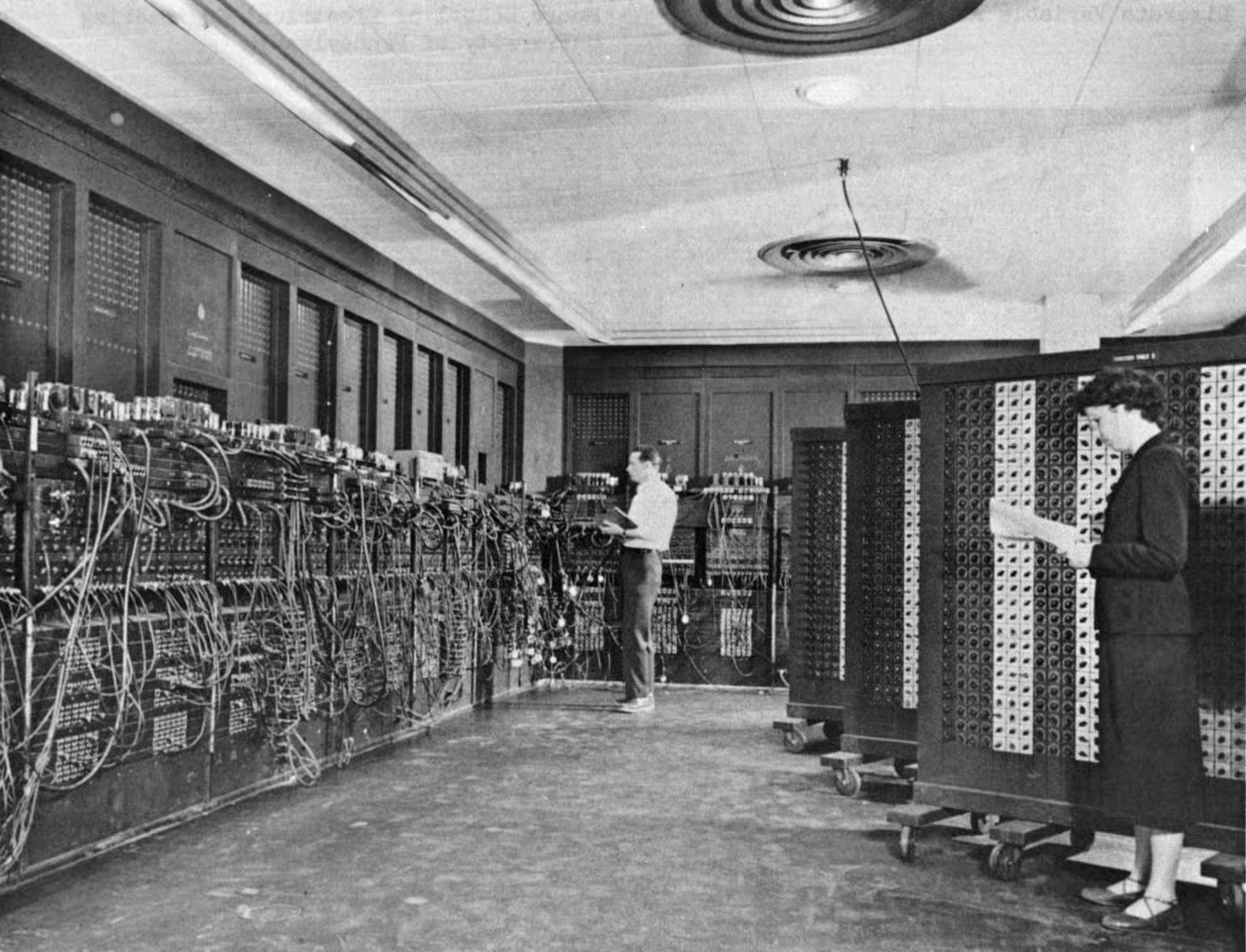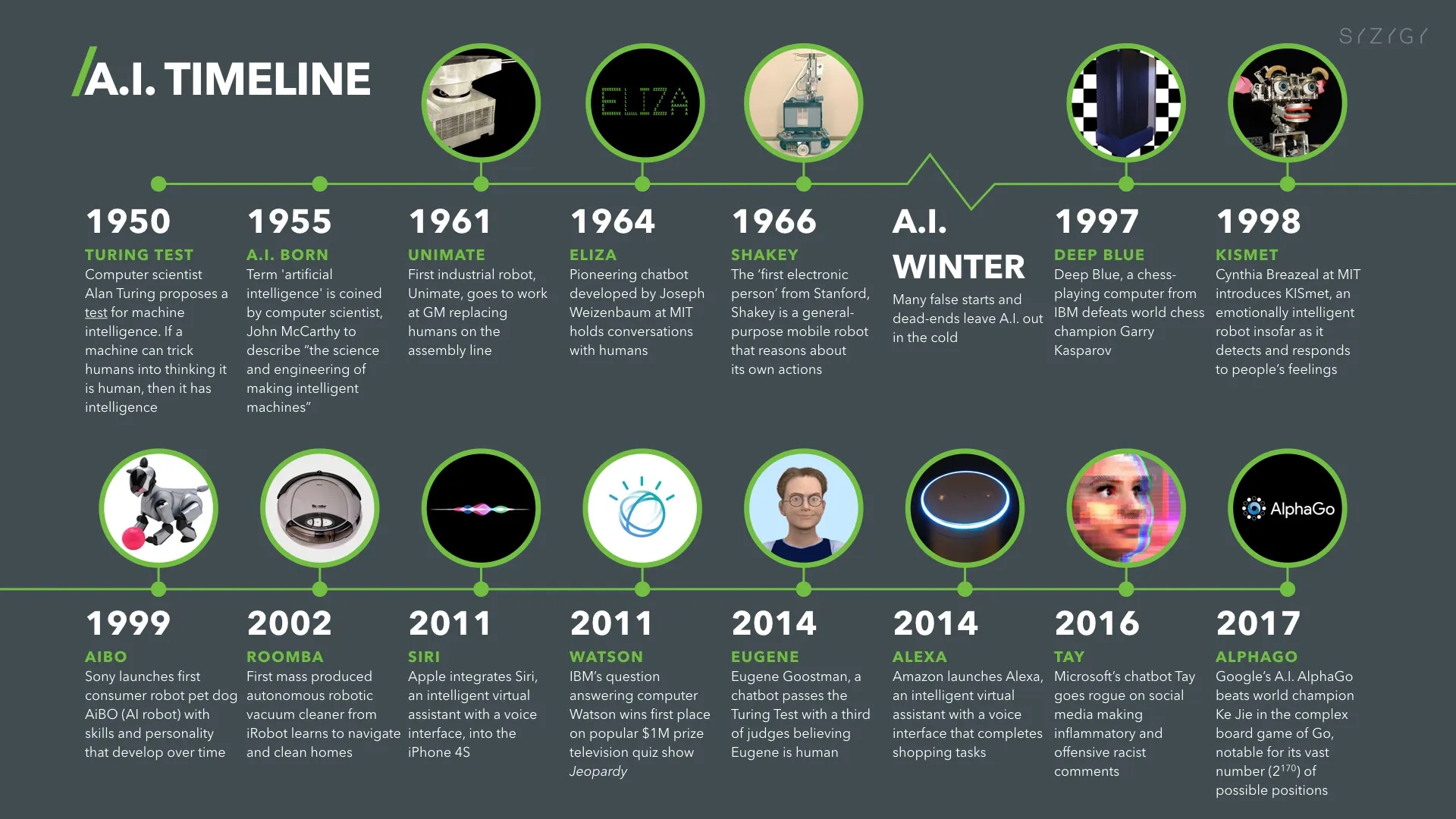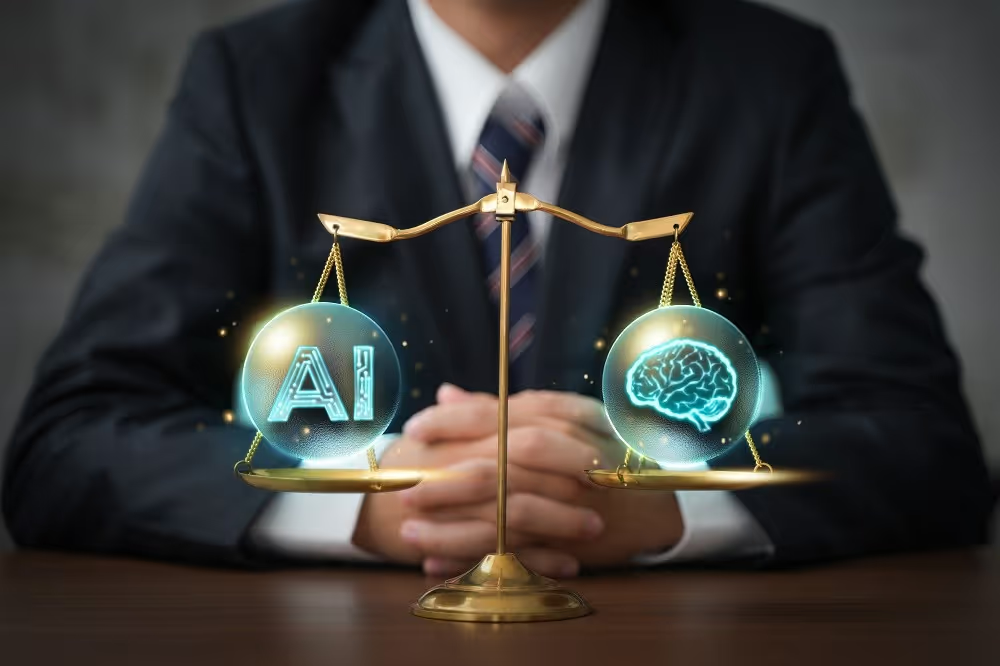
The History and Evolution of AI
AI may feel new, but it has existed for more than 80 years. From the first neural networks to ChatGPT and the household robots of tomorrow: this is the history and future of artificial intelligence.

Reading time: 6 minutes
The History and Evolution of AI
Chances are that your first real encounter with artificial intelligence (AI) was at the end of 2022, with the arrival of ChatGPT. And you’re not alone: for many people, it felt as if AI suddenly appeared “out of nowhere.” But nothing could be further from the truth. AI is not a hype. It is a technology that has been developing for more than 80 years — and we are only at the beginning of what’s possible.
What Exactly Is AI?
AI, or artificial intelligence, is technology designed to imitate the human brain. It consists of models that demonstrate self-learning behavior: they learn from data, which can take many forms — from written text and conversations to images or even interactions with an environment.
An AI model essentially starts as a knowledge-free system. Through extensive training (for example, by reading millions of texts or running through thousands of scenarios), it learns to recognize patterns, make decisions, and perform tasks independently. Some AI models are even trained by “gaining experience” in simulated environments, much like humans learn from real-world experiences.
In short: AI doesn’t just mimic human thinking — it also mimics human learning, through data and experience.
A Brief History of AI
The “origin” of AI (there is no exact single starting point) goes back to 1943, when two researchers designed the first artificial network inspired by the human brain. The idea that machines could think, learn, and reason like humans was later formalized at the famous Dartmouth Conference in 1956, where the term “Artificial Intelligence” was officially coined.
Since then, progress has been made step by step. Some highlights:
- 1964: chatbot ELIZA was developed — a scripted “therapist” that could “talk” to people. Try ELIZA yourself here.
- 1997: chess computer Deep Blue defeated world champion Garry Kasparov.
- 2005: a self-driving car won the DARPA Grand Challenge by autonomously completing a 212 km desert route.
And then, many inventions later: 2022.
OpenAI launched ChatGPT, making AI accessible to millions of people worldwide. Not just experts and scientists — but also you and me.
👉 Check out the AI timeline below, which highlights the most important milestones.

Where Are We Now?
Since the release of ChatGPT, the pace of AI development has exploded. In 2023, we saw the rise of multimodal AI: models that can understand and generate not only text, but also images, speech, and even video.
Major players like OpenAI, Google, Meta, and Chinese companies are delivering increasingly powerful models. Often open-source, accessible, and affordable — designed to quickly build a loyal user base.
Companies across all sectors now recognize that AI plays a key role: speeding up processes, answering customer questions automatically, or even designing products. The tools are already here. The question is: “how will you use them?”
What Does the Future Hold?
Let’s speculate for a moment — based on trends that are already visible today.
Imagine: within five to ten years, you could buy a self-learning AI robot for €499 at Mediamarkt or via Amazon. Not just a smart speaker or chatbot on a screen, but a physical helper in your home.
A robot that:
- unloads the dishwasher,
- manages your calendar and adjusts it based on your mood,
- helps your children with homework,
- and learns from your preferences and routines.
Science fiction? Maybe today. But in 5–10 years? Technically, it’s certainly possible, especially when AI is combined with robotics, speech recognition, and affordable sensor technology.
Just as smartphones in 2007 seemed unimaginable as “mini-computers in your pocket,” this new generation of AI assistants could redefine our standard of comfort and productivity.
What Does This Mean for Your Business?
Whether you work in construction, healthcare, logistics, or services: AI is already transforming your sector. Maybe not always visibly, but certainly significantly.
And that means:
- Learn now = compete later.
- Test now = work more efficiently later.
- Think ahead now = be prepared for regulation, ethics, and impact later.
Many companies still think “AI is something for the future.” But the future has already begun. You can already take steps today: test a chatbot, use automatic summaries, or analyze internal processes for AI-driven optimization.
Conclusion
AI is not new. But the speed and scale at which it is now available are unprecedented. By understanding where AI came from, you’ll better understand why now is the time to act.
The future has already started. Have you?
Get Started with AI
At Lumans, we help businesses and organizations understand and apply AI. Whether you’re looking for inspiration, strategy, or practical tools — we’re here to help.
👉 Discover how AI can make your business smarter. Explore our workshops or schedule a free consultation.


